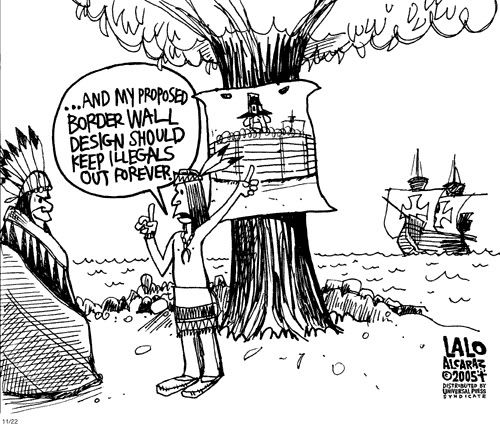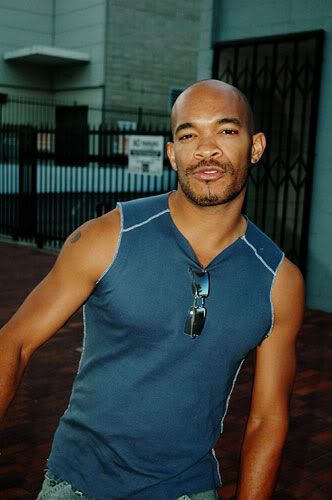
Ampula
A blog on channeling my energies to achieve more balance, introspection, progessive living & transgressing.........
Friday, November 25, 2005
Same sex activity found in more than 40% of population
AMPULA does a take on The Onion:
American Journal of Psychology publishes proactive study: Same sex activity found in more than 40% of population
In a startling news release today, the American Journal of Psychology released results from a study finding that 42% of Americans have same sex desire and or activity. The study goes further to suggest that there are more individuals who have sex with the same gender than would identify as ‘gay’ or ‘lesbian’, confirming what some experts call ‘the activity that prefers no name’. It has long been known that sexual behavior departs from an individual's chosen identity or spontaneous desires. This study confirms that although the majority of Americans choose to identify as heterosexual, almost half exhibit same-sex attractions and behaviors.
Key findings:
42 percent of women and 47% of men feel constrained by the heterosexual model -- constantly editing themselves, engaged in the task of trying to look, sound, and act ‘straight’.
Nearly two-thirds of men and women fear that acknowledgement of their same-sex desire or activity would lead to such labels as ‘gay’ or ‘lesbian’.
45% of men and 40% of women occasionally act on their same sex desire but don’t talk about it, usually due to shame, a strong social disincentive and the lack of a socially acceptable language to speak about it.
40 percent of men and 38% of women would choose someone of the same gender as a partner, if given the choice.
The bottom line: 42 percent of men and women experience hidden desires and behaviors and feel constrained by society’s strong negative attitude towards gays and lesbians. This is a wake-up call for America. Those who have same sex desire or behavior comprise more than 40 percent of the population, marriage-bias is a luxury this country cannot afford.
According to UCLA Medical Center sexuality specialist Dr. Audra Hurst, “sexual orientation is an illusory social construct. People should stop worrying about it and simply allow others and themselves to have sex with or love whomever they please”.
"Everyone is familiar with the 10% figure, first reported by Kinsey, but we have found that we have not been counting those who have homosexual desire and behavior but call themselves ‘straight’”, Hurst said. "Few people think about calling themselves ‘gay’ or ‘lesbian’ just because they have sex on the side with someone of the same gender, as a result, we have been underreporting the size of the same-sex community all along."
It is widely believed that the release of these findings will have its largest impact on public policy, religious edicts, and politics - among other societal areas. A widespread ‘coming out of the closet’ may also occur with individuals originally ashamed and in denial about their desire and behavior becoming more open as they view it as ‘normalized’.
“The Roman Catholic Church now acknowledges sexuality is a complex series of feelings, desires and behaviors and no longer proclaims heterosexuality as ‘normal’ or legislated by God, it simply is an expression that can result in procreation” remarked Joaquin Navarro-Valls, spokesperson for the Vatican.
While this study will have a profound if not revolutionary impact on conventional thoughts on sexuality, it is not clear whether it will “disrupt the normal tradition of man and woman” as described by the conservative group Focus on the Family’s James Dobson. The group is reportedly in talks to change its name to ‘In the Family’ in a nod to gay groups use of the term to describe someone who is gay.
President Bush signed an executive order Friday day authorizing the marriages of and adoptions by "all lesbians and gays in America."
"As president, my first duty is to ensure the American people have equal rights and access, whether the issue is marriage, adoptions or jobs," said Bush, standing on the lawn of the National Mall next to a non-partisan group of national gay and lesbian leaders. "This proactive initiative will rid our nation of discrimination that has lasted too long, gone too far and resulted in untold depression and suicides."
Bush added: "I want the people of the United States to know that we are all equal and that unions between men and women, men and men and women and women are all equal in the eyes of God."
Executive Order 1342A, which calls for civil marriage for all and an end to sexuality based discrimination, specifies that those found guilty of not following the new law will be punished and will be required to take a 2 year sexuality education and sensitivity course and have at least 1 same sex experience.
The order, written by members of Bush's Council of Advisers on Sexuality, goes much further than the proposed 1999 Employment Non-Discrimination Act (ENDA) and erases from memory the proposed Constitutional Amendment to ban what in 2004 was called ‘gay marriage’. It will be overseen by the Department of Justice, Civil Rights Division, which will work closely with state Justice Agencies and Religious institutions to ensure that the order is put into operation evenly and fairly.
"This order was developed with the help of my top sexuality advisers," Bush said. "We can all trust that their wisdom, manifested by this bold, equal-rights initiative, will make us a more fair and just society."
Secretary of State Condoleezza Rice will meet with the Canadian prime minister and Spanish president next week to discuss how implementing civil marriage and other sexuality related equal-rights efforts work in their countries. The Department of Justice’s deadline for nationwide implementation of this order is July 4, 2006.
Administration critics have suggested that the president's plan is too broad in scope, and opens the unions of married American couples to a dangerous threat.
"What about traditionally married people, if he allows this to happen, there will be chaos, our children won’t know who or what to marry! Soon, people will be marrying their pets!” said Republican Party strategist Elaine Quigley, appearing on MSNBC's Hardball. "If you redefine marriage for same-sex couples, you've redefined it for everyone," opening the door to the possibility that, she said, "You can say I want to have marriage for three people."
The Office of the White House Counsel, which oversees the usage of all executive-branch insignias, is expected to approve incorporating a pink triangle (the popular symbol for gay freedom struggle) into the presidential seal as early as next week.
Wednesday, November 23, 2005
Every Once in a While....
This insightful commentary comes from Ampula's British correspondent Bene. You can find more from Bene writer at: http://crianca_da_noite.blogspot.com
-Ampula
The thing that strikes me most as I hear reports on the British television news is the claim the media has on understanding racism in other countries. When Rosa Parks died, a reporter commented that while this great symbol of the civil rights movement who had helped change race relations in the United States was being laid to rest, America was still grappling with race issues as marked by the events of the Katrina crisis just recently.
Similarly, the media was quick to call attention to issues of institutional racism in France following the “riots” caused by disenfranchised poor immigrants from the Maghreb. These observations may have purported to display intelligent British analysis on race issues elsewhere, but also helped present the idea that in comparison, this country was doing much better vis-à-vis its other counterparts in the first world when it came to matters of race and its management. But every once in a while these illusions are laid to rest and often brutally so. I
n July 2005, Anthony Walker, aged 18, died in Liverpool. The men suspected of the crime of killing Walker were brought to trial and after initial claims of their innocence, one of them confessed to having pursued the young man and driving an axe through his head. The news stated these facts. In fact, one might even say they reported these events neutrally. There was then no analysis of the facts. The facts as we knew them were that Walker was black and that his assailants were white. We also know that the victim was with his cousin and his white girlfriend at a bus stop when he had heard racist abuse called out at him and that rather than retaliate, the three walked away but then were set upon and forced to run. Acknowledging the racist circumstances under which the events occurred, MP Edward O’Hara (who oversees the area) was quick to add that the event was “entirely untypical of the community in which it happened.” Oh, but he was not done. He also said, “this act was random, exceptional and representative of absolutely nothing.” Blackbritain.co.uk, from where I quote O’Hara’s eloquence would beg to differ, listing numbers of several “acts” in the area.
Meanwhile, in the matter of Walker’s case, the court has heard that the young man was hunted down for “no reason other than the colour of his skin.” The British media, it seems, is yet to say much else. Their silence speaks volumes.
Wednesday, November 16, 2005
NY & LA
Back recently from a work-related trip to NYC, that NY vs LA thing started to get to me. Seems e'rebody's got something to say or write on it! Here's a review of a book with some interesting facts and findings about both cities......New Angeles anyone?......
REVIEW: David Halle, New York & Los Angeles: Politics, Society, and Culture: A Comparative View, University of Chicago Press, 2003
by Mariana Mogilevich
At opposite sides of the continent sit the United States' two largest cities, New York and Los Angeles, paired beacons of urban America. New York is the modern city par excellence. Now that the modern age is over, Los Angeles embodies the future of the city, for better or worse. Shallow/deep, tall/sprawling, the dichotomy is so ingrained in our conception of both places it's hardly necessary to say more, though the universal acceptance of these pairings shows to what extent the two cities derive their identities from one another. Like any good opposition, each extreme bears within it some elements of the other. In the end, it would almost seem natural for the NY-LA dialectic to resolve itself in the formation of a new ur-city-New Angeles? So, how different are New York and Los Angeles, really? Does one represent the future of the American city more than the other? Are the myths that define them firmly based in reality? There is only one way to find out, and NY & LA does so in the most intense application of the compare and contrast approach the world has ever seen. This ambitious tome seeks to find the truth behind our perceptions of both cities by the numbers. Twenty-three contributors submitted every imaginable aspect of the cities to statistical analysis. As insane as this approach may seem, it successfully achieves a comprehensive view of NY and LA, with no shortage of surprising findings. The results will become ever more encyclopedic with the release of a companion CD with additional statistics and updates (which will also be available online). This total picture takes into account immigration statistics and patterns of residential segregation. It goes on to look at crime rates, welfare reform, public education, and city governance. The book even looks at the cities' respective art worlds (conclusion: they're growing more alike). It isn't exhaustive-clearly it couldn't be-but the book's breadth is nonetheless impressive. The book's depth often matches its ambitious breadth. Social science statistics can be flimsy-while essential, they can be manipulated to demonstrate just about anything. As befits an academic volume, NY & LA is packed with charts, tables, and graphs of all kinds, far more than the casual reader will care to examine. But within many of the articles lie more novel approaches to tricky questions. In a discussion of the fact and fiction of crime in NY and LA, the authors examine local fears of gang violence by going to the newspapers. The word "gang" appeared all over the LA Times in the 1990s, used even to explain crime stories with no proof of gang involvement. In The New York Times, on the other hand, "gang" was used as a verb during the same period of time, illustrating a local view of crime as random, ad hoc-far removed from Los Angeles' obsession with organized gangs of violent youths. Interestingly, analysis of crime statistics shows that teenage homicide victims and suspects in both cities are (and were throughout the '90s) at comparable levels, suggesting that although our impressions of the city's relative criminal patterns differ widely, the realities do not. The two cities faced similar challenges, but LA was ill-equipped to deal with them. With less oversight of and, consequently, less confidence in the LAPD, lawlessness ruled the day, in the papers if not on the streets. Is Los Angeles, with the Rodney King riots, the capital of social unrest? Compare riots of the post-war era in both cities-really compare-and you will find far more unrest in the recent history of the New York area. Immigration naturally looms large over this book. Recent attitudes towards crime, welfare, and education in each city have largely evolved in reaction to the pressures of a rapidly changing urban population. And immigrants will continue to play an enormous role in shaping each city. Los Angeles has been far more hostile to its newcomers under the perception that they are "threatening" in their homogeneity and illegal status, while New York City continues to be far more welcoming, in policy and practice, to immigrants from all over the world. But in this case too, the cities are becoming more alike: tolerance in LA is growing along with the political clout of immigrants, while in NY, traditional patterns of immigrant settlement are changing in a very West-Coast fashion as more newcomers settle directly in suburban areas. NY & LA looks closely at new Latino and Asian populations, not with the usual nativist biases, but as a new instance of an age-old tradition of immigration and acculturation. The book insists on the importance of looking "correctly" at the U.S. Latino population-to understand that a majority of Latinos also consider themselves white, and to recognize that our reluctance to see them as such repeats an earlier refusal to see European "ethnics" as white. It is once again a question of taking a fresh look at an issue we think we know all too well, only to learn that we've not been seeing clearly. Our perceptions of cities are shaped over time, and over time our memory makes selections. In this case, the facts clear up some longstanding confusion. Which city is more segregated? It's New York-we just don't realize it because everyone rides the subway together. And think New York's centralization is antithetical to Los Angeles' sprawl? Actually, New York City has barely recovered its population since the exodus of the 1970s and '80s-only by 2000 did the city center regain and then surpass its 1970 population. Visions of Manhattan's wealth and glamour aside, all the money turns out to go home with commuters, just like in LA. The authors show that the sprawling "LA-ification of the New York metropolis is far advanced," but also insist that a dense, walkable "New York-ification of Los Angeles' inner core has been underway for some time," (a claim recently bolstered by Frank Gehry's much feted addition to downtown). Considering that both phenomena have their good points and bad, the book's conclusions are simultaneously scary and exciting-and a clue to the possible synthesized American metropolis of the future.
Tuesday, November 01, 2005
Let's Explore a Bit......
Now for a little on the "introspection, progressive living" thing. Ask yourself & begin your journey, on these questions from Sam Keen:
How can I find a meaning, purpose, vocation for my life?
What can I know?
What ought I to do?
For what may I hope?
Is there life beyond death?
Whom do I love? Who loves me?
What curtails my freedom?
How can I escape from the constricting social, political, sexual, and economic myths that were imposed on me by my family and culture?
To what cause, ideal, faith may I surrender without destroying the integrity of my self?
What does it mean to experience the sacred?
How can I live a spirited life in a world dominated by a secular-technological-economic vision of reality?
How can we create a more just and peaceful world?
Human life is a journey whose end is not in sight. Searching, longing and questioning is in our DNA. Who we are and what we will become is determined by the questions that animate us, and by those we refuse to ask. Your questions are your quest. As you ask, so shall you be.
ampula
In our society, we’ve become myopic and obsessive about one
particular kind of love: dyadic love, which takes the form of romance,
sex, marriage. As a result we end up asking all the wrong
questions. Books about relationships talk about how to “get” the
love you need, how to “keep” love, and so on. But the right question
to ask is “How do I become a more loving human being?”
- Sam Keen

